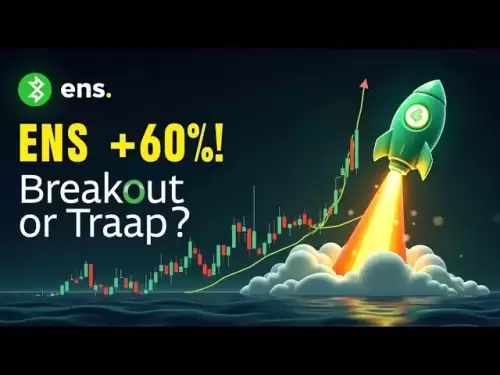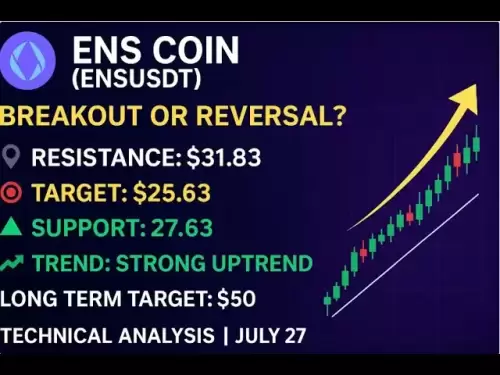-
 Bitcoin
Bitcoin $117900
0.31% -
 Ethereum
Ethereum $3766
0.28% -
 XRP
XRP $3.176
-0.31% -
 Tether USDt
Tether USDt $1.000
0.00% -
 BNB
BNB $795.6
1.51% -
 Solana
Solana $186.8
-1.09% -
 USDC
USDC $0.9999
-0.01% -
 Dogecoin
Dogecoin $0.2353
-1.33% -
 TRON
TRON $0.3226
1.49% -
 Cardano
Cardano $0.8172
-1.08% -
 Sui
Sui $4.178
3.06% -
 Hyperliquid
Hyperliquid $43.05
-3.39% -
 Stellar
Stellar $0.4367
-0.57% -
 Chainlink
Chainlink $18.62
1.47% -
 Hedera
Hedera $0.2828
6.63% -
 Bitcoin Cash
Bitcoin Cash $584.7
5.65% -
 Avalanche
Avalanche $24.81
2.53% -
 Litecoin
Litecoin $112.8
-0.88% -
 UNUS SED LEO
UNUS SED LEO $8.975
-0.08% -
 Shiba Inu
Shiba Inu $0.00001395
-1.07% -
 Toncoin
Toncoin $3.285
-1.05% -
 Ethena USDe
Ethena USDe $1.001
0.01% -
 Polkadot
Polkadot $4.123
0.76% -
 Uniswap
Uniswap $10.49
-0.18% -
 Monero
Monero $326.5
0.14% -
 Dai
Dai $0.9999
-0.02% -
 Bitget Token
Bitget Token $4.576
0.34% -
 Pepe
Pepe $0.00001247
-1.55% -
 Cronos
Cronos $0.1400
3.77% -
 Aave
Aave $295.1
-0.73%
What is DeFi's token economics?
DeFi token economics aligns incentives among protocol users, token holders, and developers, driving the growth and sustainability of decentralized finance ecosystems.
Feb 16, 2025 at 12:13 am
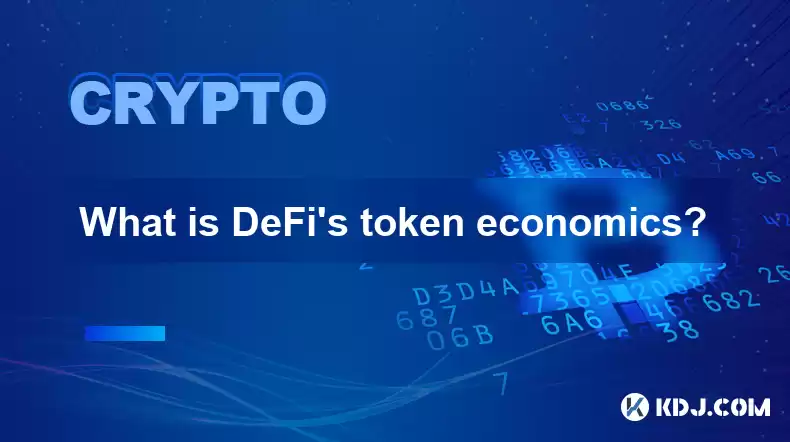
Key Points
- Definition of DeFi Token Economics
- Classification of DeFi Tokens
- Tokenomics of Governance Tokens
- Tokenomics of Utility Tokens
- Tokenomics of Protocol Revenue Tokens
What is DeFi's Token Economics?
DeFi's token economics encompasses the design, distribution, and incentives for tokens issued by decentralized finance (DeFi) protocols. It plays a crucial role in aligning the interests of protocol users, token holders, and developers, driving the growth and sustainability of DeFi ecosystems.
Classification of DeFi Tokens
DeFi tokens can be broadly classified into three main categories:
- Governance Tokens: These tokens grant holders voting rights to influence protocol development, governance decisions, and treasury management. They align the interests of token holders with the long-term success of the protocol.
- Utility Tokens: These tokens are used to access or utilize specific features or services within the DeFi protocol. They may represent collateral, rewards, or access to exclusive functionalities. Utility tokens align incentives for protocol usage and engagement.
- Protocol Revenue Tokens: These tokens capture a portion of the protocol's revenue and distribute it to token holders. They provide a passive income stream to token holders and incentivize their participation in the protocol.
Tokenomics of Governance Tokens
- Governance token distribution typically involves a combination of public sales, private placements, and protocol rewards.
- Governance token holders may exercise voting rights directly or through decentralized autonomous organizations (DAOs).
- Tokenomics often include mechanisms for token dilution, supply reduction, and value capture to ensure future value appreciation.
Tokenomics of Utility Tokens
- Utility tokens are often distributed to protocol users as rewards for interacting with the protocol, such as providing liquidity, borrowing, or lending.
- Tokenomics design aims to incentivize specific behaviors that enhance protocol functionality and security.
- Utility tokens may be repurposed or burned over time to optimize their value proposition.
Tokenomics of Protocol Revenue Tokens
- Protocol revenue tokens are issued as a percentage of the protocol's revenue, which may be generated from transaction fees, interest payments, or yield farming.
- Token distribution aligns incentives, ensuring that token holders benefit financially from the protocol's success.
- Tokenomics may include vesting schedules, lock-up periods, and buyback mechanisms to manage supply and price stability.
FAQs
- What factors influence the value of DeFi tokens?
Demand and supply dynamics, protocol usage, governance efficacy, and tokenomics design all contribute to the value of DeFi tokens.
- How can I assess the tokenomics of a DeFi protocol?
Review token distribution, use cases, governance rights, and economic incentives to evaluate the potential value of a DeFi token.
- What are the risks associated with investing in DeFi tokens?
Volatility, smart contract risks, regulatory uncertainty, and changes in market conditions are potential risks associated with DeFi token investments.
- How can I ensure the safety of my DeFi token investments?
Store tokens in secure wallets, research protocols thoroughly, and consider diversification and prudent risk management strategies.
Disclaimer:info@kdj.com
The information provided is not trading advice. kdj.com does not assume any responsibility for any investments made based on the information provided in this article. Cryptocurrencies are highly volatile and it is highly recommended that you invest with caution after thorough research!
If you believe that the content used on this website infringes your copyright, please contact us immediately (info@kdj.com) and we will delete it promptly.
- Crypto ETFs and Altcoins: Navigating the Wild West with Meme Coins and Tokenized Assets
- 2025-07-27 23:04:06
- Pi Coin in 2026: Will It Be Worth the Wait?
- 2025-07-27 23:10:12
- Dogecoin Price Prediction: Bullish W Pattern Sparks Hope for $1 DOGE
- 2025-07-27 23:15:21
- Bitcoin Price, Portfolio Growth, and the Remittix Alternative: Navigating the Crypto Landscape
- 2025-07-27 23:04:06
- Cryptos to Watch in 2025: Punisher Coin, Chainlink, and the Altcoin Arena
- 2025-07-27 18:30:13
- Bitcoin, Altcoins, Rebound: Navigating the Crypto Comeback Trail
- 2025-07-27 18:30:13
Related knowledge
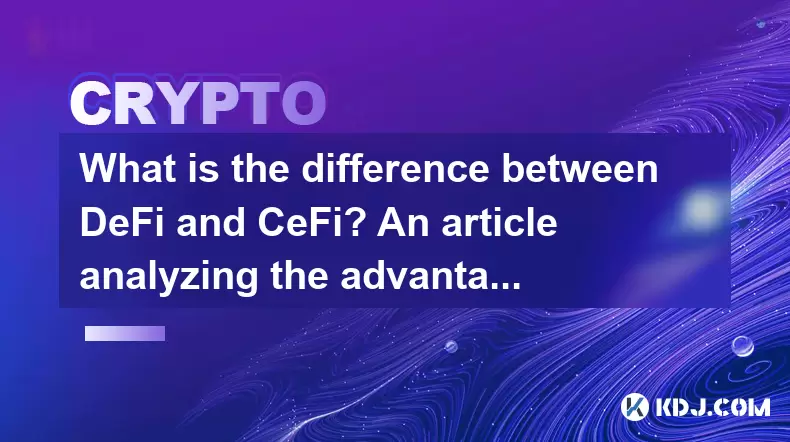
What is the difference between DeFi and CeFi? An article analyzing the advantages and disadvantages of both
Jun 13,2025 at 03:57am
Understanding the Foundations of DeFi and CeFiTo fully grasp the difference between DeFi (Decentralized Finance) and CeFi (Centralized Finance), it’s ...
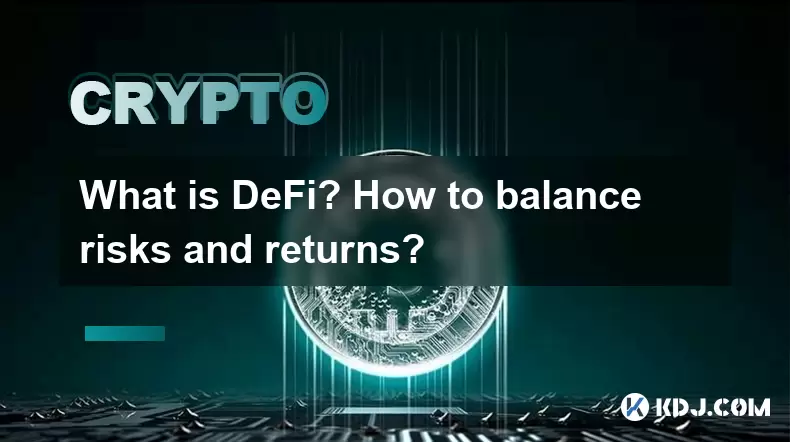
What is DeFi? How to balance risks and returns?
May 31,2025 at 12:22pm
What is DeFi? How to Balance Risks and Returns? Decentralized Finance, commonly known as DeFi, represents a revolutionary shift in the financial ecosy...
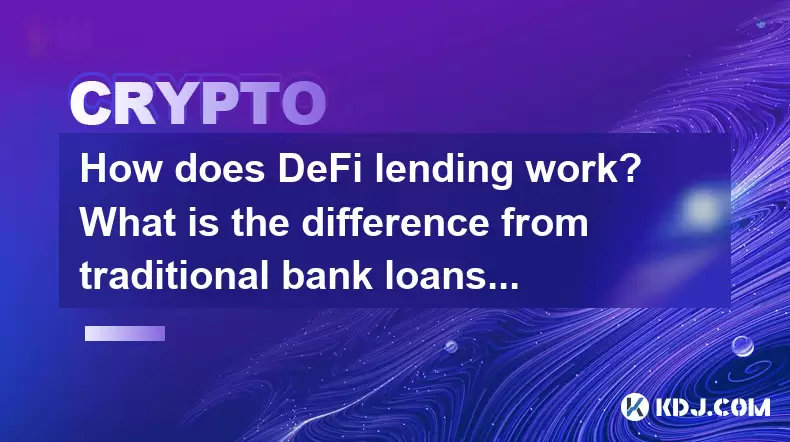
How does DeFi lending work? What is the difference from traditional bank loans?
May 29,2025 at 05:36pm
Introduction to DeFi LendingDeFi lending, or decentralized finance lending, represents a revolutionary shift in the way borrowing and lending are cond...
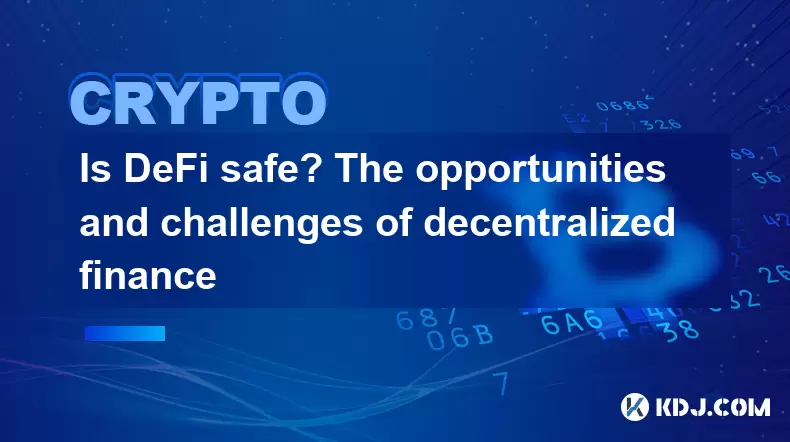
Is DeFi safe? The opportunities and challenges of decentralized finance
May 27,2025 at 02:28pm
Decentralized Finance, commonly known as DeFi, has revolutionized the financial landscape by offering a range of financial services without the need f...
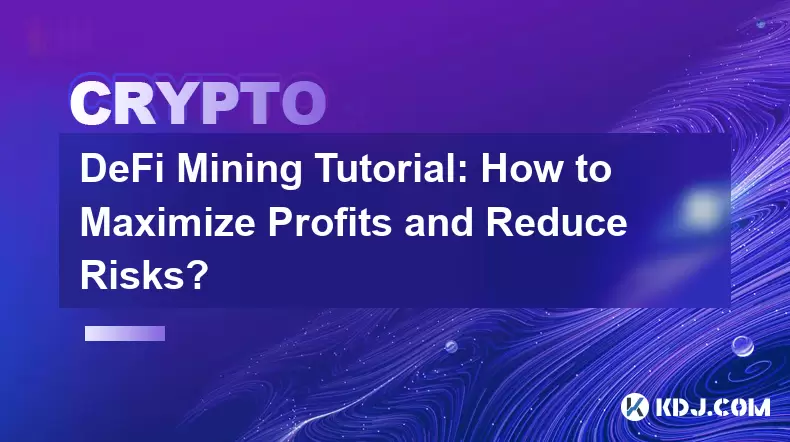
DeFi Mining Tutorial: How to Maximize Profits and Reduce Risks?
May 27,2025 at 07:42am
DeFi, or Decentralized Finance, has opened up a new world of opportunities for crypto enthusiasts looking to maximize their profits through various mi...
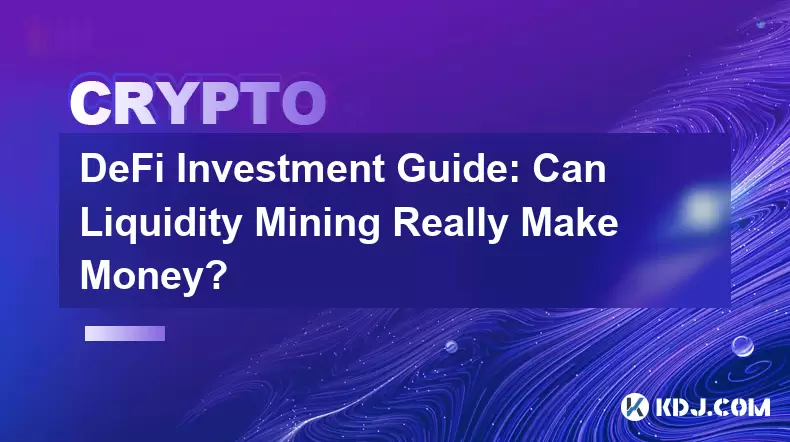
DeFi Investment Guide: Can Liquidity Mining Really Make Money?
May 28,2025 at 10:18am
Introduction to Liquidity Mining in DeFiLiquidity mining has emerged as a popular method for earning passive income within the decentralized finance (...

What is the difference between DeFi and CeFi? An article analyzing the advantages and disadvantages of both
Jun 13,2025 at 03:57am
Understanding the Foundations of DeFi and CeFiTo fully grasp the difference between DeFi (Decentralized Finance) and CeFi (Centralized Finance), it’s ...

What is DeFi? How to balance risks and returns?
May 31,2025 at 12:22pm
What is DeFi? How to Balance Risks and Returns? Decentralized Finance, commonly known as DeFi, represents a revolutionary shift in the financial ecosy...

How does DeFi lending work? What is the difference from traditional bank loans?
May 29,2025 at 05:36pm
Introduction to DeFi LendingDeFi lending, or decentralized finance lending, represents a revolutionary shift in the way borrowing and lending are cond...

Is DeFi safe? The opportunities and challenges of decentralized finance
May 27,2025 at 02:28pm
Decentralized Finance, commonly known as DeFi, has revolutionized the financial landscape by offering a range of financial services without the need f...

DeFi Mining Tutorial: How to Maximize Profits and Reduce Risks?
May 27,2025 at 07:42am
DeFi, or Decentralized Finance, has opened up a new world of opportunities for crypto enthusiasts looking to maximize their profits through various mi...

DeFi Investment Guide: Can Liquidity Mining Really Make Money?
May 28,2025 at 10:18am
Introduction to Liquidity Mining in DeFiLiquidity mining has emerged as a popular method for earning passive income within the decentralized finance (...
See all articles





















